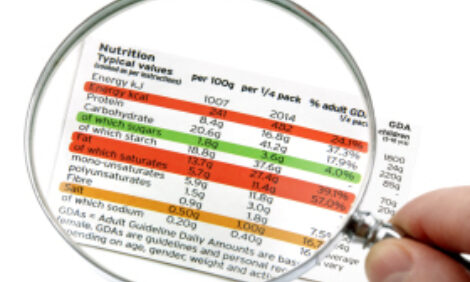



Tyson's Year off to Good Start
US - US meat and food processing giant, Tyson Foods, has seen sales for the first quarter of the 2013 financial year rise from $8.3 billion last year to $8.4 billion this year and operating income rose from $278 million to $300 million.Net income was up to $178 million from $156 million in the first quarter of 2012.
"Fiscal 2013 is off to a good start," said Donnie Smith, president and chief executive officer of Tyson Foods.
"With earnings of $0.48 per share in the first quarter, we are on our way to producing earnings this year better than fiscal 2012. We knew we'd face headwinds, and that has certainly been the case; however, we're not simply holding our own. We're producing solid results while preparing for growth.
"We are being both methodical and innovative in our approach to managing the challenges that come in this business, and our approach is working.
"I have every confidence in our team's ability to execute their plans and meet their goals. This is an exciting time at Tyson, and while we're pleased with the progress we've made, we feel like we're just getting started."
In the chicken segment, despite increased domestic and international production, total sales volumes decreased in the first quarter of fiscal 2013 due to reduced open-market meat purchases, planned inventory build to meet forecasted customer demand and mix of rendered product sales.
The increase in average sales price is primarily due to mix changes and price increases associated with increased input costs.
Since many of our sales contracts are formula based or shorter-term in nature, we were able to offset rising input costs through improved pricing and mix.
Operating income was positively impacted by increases in average sales price, improved live performance and operational improvements. These increases were partially offset by increased feed costs of $170 million.
In beef, fed cattle supplies decreased which drove up average sales price and livestock cost. Sales volumes decreased due to a reduction in live cattle processed as a result of soft domestic demand for beef products and outside tallow purchases.
Operating income increased in the first quarter of fiscal 2013 as the result of balancing our supply with customer demand partially offset by increased operating costs from reduced production.
In pork, live hog supplies increased which drove down average sales price and livestock cost. Sales volumes decreased as a result of balancing our supply with customer demand. While reduced compared to prior year, operating income remained strong in the first quarter of fiscal 2013 despite brief periods of imbalance in industry supply and customer demand.
In the prepared foods segment, operating income decreased in the first quarter of fiscal 2013, despite increased volumes, as the result of lower average sales prices caused by lower raw material costs as well as product mix and additional costs incurred as we invested in our lunchmeat business.
Mr Smith said: "Our continued capital investment in our businesses, strong liquidity and reduced interest expense will help us to maintain strong operating results despite challenging market conditions.
"In fiscal 2013, we expect overall domestic protein production (chicken, beef, pork and turkey) to decrease approximately one per cent from fiscal 2012 levels.
"The recent drought conditions have reduced expected grain supplies, which will result in higher input costs as well as increased costs for cattle and hog producers."
Current USDA data shows US chicken production to be relatively flat in fiscal 2013 compared to fiscal 2012. Based on current futures prices, Tyson said it expects higher feed costs in fiscal 2013 compared to fiscal 2012 of approximately $600 million.
The capital investment and significant operational improvements the company has made in its chicken segment have placed it in a better position to adjust to rising feed costs and remain profitable. Additionally, many of the company's sales contracts are formula based or shorter-term in nature, which allows it to offset rising input costs through pricing.
However, there may be a lag time for price increases to take effect.
"We anticipate our Chicken segment will return to normalised ranges in the second-half of fiscal 2013," the company said.
The company expects to see a reduction of industry fed cattle supplies of two to three per cent in the 2013 financial year, compared to fiscal 2012, with the reduction predominately in the second half of fiscal 2013.
Although Tyson generally expects adequate supplies in the regions it operates its plants, there may be periods of imbalance of fed cattle supply and demand.
"We anticipate beef exports will remain strong in fiscal 2013. For fiscal 2013, we believe our Beef segment will remain profitable, but could be below our normalised range of 2.5-4.5 per cent," the company said.
Tyson said it expects industry hog supplies to be flat compared to fiscal 2012 and pork exports to remain strong in fiscal 2013 but less than fiscal 2012.
"For fiscal 2013, we believe our Pork segment should remain at or above our normalised range of six to eight per cent<" the company statement said.
Tyson said there will be operational improvements and increased pricing to offset increased raw material costs in prepared foods.
"Because many of our sales contracts are formula-based or shorter-term in nature, we are typically able to offset rising input costs through increased pricing. For fiscal 2013, we believe our Prepared Foods segment should be in its normalised range of four to six per cent.
"We expect fiscal 2013 sales to approximate $35 billion, mostly resulting from price increases related to expected decreases in domestic availability of protein and increased raw material costs."









